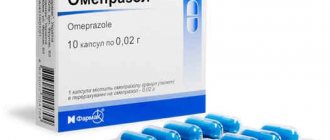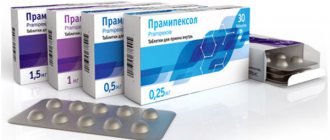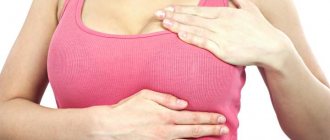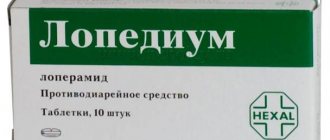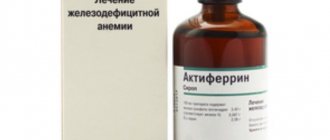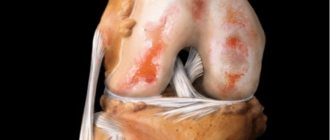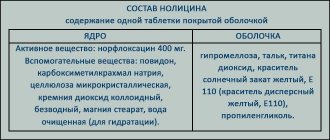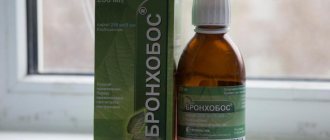Composition of Aktiferrin
The drug is available in three dosage forms: capsules (blisters of 10 pcs.), syrup (dark glass bottles, 100 ml), drops (1 bottle - 30 ml). Composition of all varieties of Actiferrin:
| Compound | Weight, mg |
| Capsules | |
| Dried iron sulfate | 113,85 |
| D,L-serine | 129 |
| Auxiliary components: soybean oil (hydrogenated), lecithin, refined rapeseed oil, non-crystallizing dehydrated substance from liquid sorbitol (70%), glycerin 85%, partially hydrogenated soybean oil, gelatin, yellow wax, iron oxide (black, red), heptahydrate. | |
| Syrup | |
| Iron sulfate | 34,20 |
| D,L-serine | 25,8 |
| Auxiliary components: ascorbic acid, invert syrup (72.7% TS), cream and raspberry flavors, purified water, ethanol 96%, ethyl acetate nucleotide. | |
| Drops per 1 ml | |
| Iron sulfate | 47,2 |
| D,L-serine | 35,6 |
| Auxiliary components: potassium sorbate, invert syrup (72.7% TS), cream and raspberry flavors, ascorbic acid, ethanol 96%, purified water. | |
Pharmacological properties
Aktiferrin contains iron, which is an essential trace element for the body. It is involved in many metabolic processes, serves as a coenzyme of cytochrome oxidase, peroxidase, catalase, is part of cytochromes, myoglobin, hemoglobin, and stimulates erythropoiesis.
The second active component of the drug is the alpha amino acid serine, which improves the absorption of iron and its entry into the systemic circulation.
The amino acid quickly restores the normal content of the microelement in the body, which ensures excellent tolerability of the drug and helps reduce the dose of iron. The daily requirement for the element in adults is 1-2 mg, in children under 7 years old - 0.5-1.5 mg, in pregnant women - 2-5 mg. Only 10% of iron is absorbed from food, so to replenish its need, the dose of the product must exceed the daily norm by 10 times.
After taking drops, capsules and syrup, only 10-15% of ferrous iron is absorbed in the duodenum and jejunum by passive diffusion. Absorption increases with element deficiency and increased erythropoiesis. With a low hemoglobin value and a depleted iron depot, absorption increases to 55%. The maximum concentration of the active component is achieved 3 hours after administration.
Iron combines with transferrin, becomes trivalent, and is transported to the depot and to the sites of hematopoiesis. After the element binds to apoferritin, it is deposited in the liver, bone marrow and spleen in the form of ferritin. Iron passes through the placenta into breast milk.
Pharmacokinetics
After ingestion, the active component in the form of iron quickly penetrates through the mucous membranes of the gastrointestinal tract into the general bloodstream in an amount of up to 10% of the dose taken. Its maximum level in the liquid part of the blood is observed on average after 3 hours. If iron levels are reduced to critical levels, iron absorption can reach 60%. After penetration into the blood, the active component attaches to transferrin, a protein that transports iron. When the complex is formed, divalent iron turns into trivalent iron, and it is in this form that it can be absorbed by the body.
The microelement is deposited in the spleen, bone marrow, and liver in the form of ferritin. The trace element penetrates the placental barrier during pregnancy and in small quantities into breast milk. Excess iron or its unabsorbed part is excreted from the body through the kidneys with urine and the gastrointestinal tract with feces. If most of the iron is excreted in the stool, it may become dark in color, which is not a cause for concern.
Read more Phenylephrine - eye drops for children
Indications for use
The reasons for prescribing Aktiferrin to children are tumor and infectious diseases, decreased immunity, and active growth of the body. General indications for use due to iron deficiency:
- significant blood loss;
- period of pregnancy and breastfeeding;
- gastrointestinal ulcer;
- gastric resection;
- chronic form of gastritis;
- tumor diseases;
- past infectious diseases.
Directions for use and dosage
All forms of Aktiferrin should be taken before or during meals, washed down with water or fruit tea. The dosage depends on the age, gender of the patient, the presence of iron deficiency, and individual characteristics.
Aktiferrin drops
For younger children, including newborns and infants, the daily dosage is prescribed in accordance with the proportion - 5 drops per 1 kg of the child’s weight, 2-3 times daily. Average dosage: infants 10-15 drops 3 times a day; preschool age 20-25 drops three times daily, schoolchildren 50 drops three times a day.
Syrup
The daily dose for children over 2 years of age is 5 ml per weight of 12 kg. Average values for preschool children are 5 ml once or twice a day, for schoolchildren 5 ml two to three times a day. During treatment, hemoglobin and serum iron levels are measured; after determining that they have returned to normal, therapy is continued for another 8-12 weeks using a maintenance dose.
Aktiferrin capsules
Adults and adolescent patients are prescribed one capsule two to three times a day. If intolerance to the drug is detected, the dosage is reduced to an acceptable one, and the duration of the course is increased. Children over 6 years of age are prescribed one capsule daily.
Contraindications
All substances must be present in sufficient quantities in the human body. Their deficiency or surplus can significantly worsen your well-being and cause certain diseases.
You can’t use “Actiferrin”:
- persons with individual intolerance to the substance or hypersensitivity;
- if you have problems with iron absorption;
- if the level of iron in the body is elevated or is in sufficient quantity;
- patients with anemia not related to iron;
- those who suffer from lactose or galactose intolerance.
You need to find out whether a person can take iron syrup directly from a doctor. Self-medication, even with seemingly safe Actiferrin, can ultimately result in huge problems.
special instructions
It is useful to study the special instructions section in the instructions:
- During treatment, teeth may darken. To prevent this, do not take the drops undiluted, and after taking them, brush your teeth thoroughly.
- With liver or kidney failure, the risk of iron accumulation increases.
- Taking Aktiferrin can aggravate ulcerative and inflammatory processes in the intestines.
- The use of the product does not affect the ability to control vehicles and machinery.
- The drug is prescribed with caution for diverticulitis, enteritis, Crohn's disease, ulcerative colitis, chronic alcoholism, bronchial asthma, allergies, hepatitis, rheumatoid arthritis, liver and kidney failure, and blood transfusions.
- The drops contain carbohydrates (0.15 XE per 1 ml), which is important for patients with diabetes to know.
- Aktiferrin should not be taken with black tea, coffee, or milk - this reduces iron absorption. Solid foods, raw cereals, bread, eggs, and dairy products have a similar effect. The break between taking the product and these products should be at least 1-2 hours.
- During therapy, feces may turn black, which has no clinical significance.
- During a course of medication, monitoring of hemoglobin and serum iron levels is necessary.
What patients say
Actiferrin drops for children are a real godsend for parents, especially if their kids do not like red meat. Typically, this form of the drug is used to increase the level of iron in the blood of preschool children.
How effective is Aktiferrin? Does it really help get rid of iron deficiency anemia? To answer these questions, it is worth studying patient reviews. They are actively left on the Internet on review sites.
Reviews of Actiferrin syrup are generally mixed. Some claim that this drug quickly helped increase the level of iron in the body and now does not allow it to fall. Such people went through everything without any negative experience.
Some claim that Actiferrin did not help at all. If you believe the reviews, this drug has harmed some people. Most often, complaints come from parents of young children. They share that because of Actiferrin, their children’s teeth began to decay, anxiety and stomach problems appeared, and they were unable to normalize iron in the body. What should we believe?
The thing is that there is truth in every review about the drug. Indeed, Actiferrin can lead to tooth decay and stomach problems. To prevent this from happening, you must carefully follow the recommendations of doctors and prevent the drug from coming into contact with your teeth. That is why it is most often diluted.
In addition, “Aktiferrin” contains ferrous iron, which is not well absorbed by everyone. Because of this, you might think that the vitamin did not help get rid of anemia. In this case, as a rule, specialists prescribe the intake of ferric iron. For example, "Maltofer".
Drug interactions
Instructions for use of Actiferrin indicate drug interactions:
- A specific antidote is Desferal, containing deferoxamine.
- Iron salts reduce the absorption of tetracyclines, Ciprofloxacin, Ofloxacin, Levofloxacin, gyrase inhibitors, Penicillamine, Levodopa, Methyldopa, levothyroxine sodium.
- Large doses of the drug reduce the renal absorption of zinc preparations (a two-hour interval must be maintained between them).
- Antacids based on calcium, magnesium, bismuth, cholestyramine, calcium-magnesium supplements reduce iron absorption.
- The combination of the drug with non-steroidal anti-inflammatory drugs and glucocorticosteroids enhances the damaging effect on the mucous membranes of the stomach and intestines.
- In children, iron reduces the effectiveness of vitamin E; a 3-4 hour interval is maintained between doses.
- Absorption of Actiferrin is enhanced by ascorbic, citric acids, and ethanol. The latter leads to toxic complications.
Use in pregnant and lactating women
If there are signs of anemia, Aktiferrin can be prescribed to pregnant and lactating women. When a prophylactic dosage is prescribed during breastfeeding, a small amount of iron enters the child’s body, which prevents the development of iron deficiency. If high dosages are indicated, then it is better to transfer the child to artificial nutrition during treatment so as not to cause excess iron in the newborn’s body.
Read more Potassium iodide eye drops - instructions for use and reviews
Overdose
The instructions indicate that overdose is more likely to occur in children. For symptoms to occur, 1 g of iron taken orally is enough. Signs of intoxication include weakness, paresthesia, fatigue, pale skin, cold sticky sweat, rapid heartbeat, decreased blood pressure, acrocyanosis, bloody diarrhea, cyanosis, weak pulse.
Complications include confusion, abdominal pain, hyperthermia, seizures, lethargy, hyperventilation, and coma. Half an hour after administration, peripheral circular collapse develops, after 12-24 hours - acidosis, fever, convulsions, leukocytosis, coma, after 2-4 days - renal and hepatic necrosis.
First aid measures: gastric lavage, milk, raw eggs. Specific therapy: internal and parenteral administration of deferoxamine (antidote). For acute poisoning, give 5-10 g of the drug, dissolving 10-20 ampoules in water. When intoxication develops, deferoxamine is administered intramuscularly slowly, for children - 15 mg/hour, for adults - 5 mg/kg body weight per hour (but not more than 80 mg/kg per day).
For mild poisoning, children are administered 1 g intramuscularly every 4-6 hours, adults - 50 mg/kg body weight (up to 4 g). In severe cases and shock, the drug is administered intravenously in a dose of 1 g. Hemodialysis is ineffective, but helps accelerate the elimination of the iron-deferoxamine complex and is effective for oliguria and anuria. Peritoneal dialysis can be prescribed. In case of severe intoxication, Unithiol is administered parenterally, but with caution - it can form neurotoxic complexes.
Side effects
Possible negative manifestations:
- persistent constipation;
- metallic taste in the mouth;
- increased gas formation;
- pain or discomfort in the stomach area;
- nausea;
- headache;
- dizziness;
- pain in the right hypochondrium;
- allergic reactions: urticaria, itching and skin rashes, anaphylactic shock, Quincke's edema.
If these side effects occur, stop taking the drug.
Analogs
Iron-based products can replace Aktiferrin capsules, drops and syrup. These include:
- Sorbifer Durules, Ferroplect - tablets based on ferrous sulfate and ascorbic acid.
- Maltofer – drops, syrup, tablets and oral solution containing iron hydroxide polymaltosate.
- Totema is a solution based on iron gluconate dihydrate, manganese and copper salts.
- Hemoferon is a solution containing iron ammonium citrate.
- Ranferon-12 – capsules based on iron fumarate with vitamins.
- Feron Forte - capsules containing iron carbonyl.
- Gemsineral - TD - capsules based on ferrous fumarate.
Aktiferrin price
You can buy Actiferrin compositum through pharmacies or the Internet. Approximate cost in Moscow:
| Type of medicine | Pharmacy | Price, rubles |
| Syrup 100 ml | Pills.ru | 264 |
| Dialogue | 223 | |
| 36,6 | 244 | |
| Drops 30 ml | Pills.ru | 358 |
| Gorzdrav | 317 | |
| Laboratory of Beauty and Health | 324 | |
| Help window | 296 | |
| Capsules 20 pcs. 300 mg | Gorzdrav | 223 |
